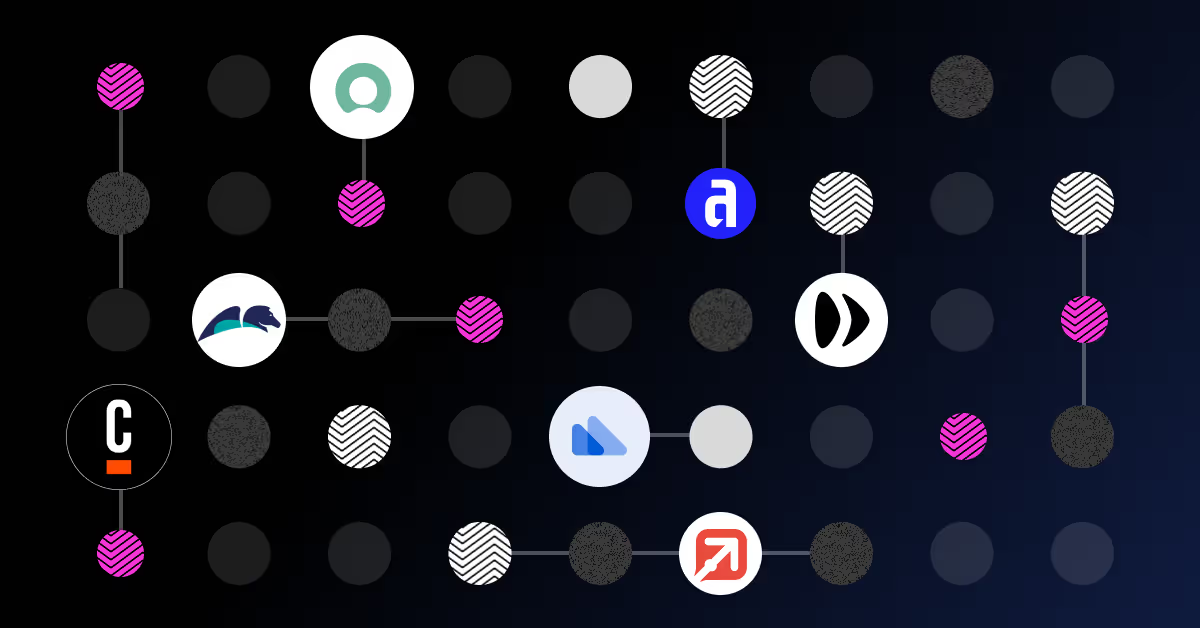The reason why PE portfolio companies are getting AI wrong (2025)
.svg)
Most PE firms are watching their portfolio companies burn cash on AI initiatives that deliver zero value. Sound familiar? It’s because they're making the same mistake everyone else is, trying to bolt AI onto broken operations and hoping for the best.
Unless you've been living under a rock, you'll have seen the MIT report that's been doing the rounds which validates this point. A whopping 95% of businesses are getting no ROI from AI.
The researchers surveyed over 300 organisations and found what they called the "GenAI Divide" – a grand canyon between the 5% extracting millions in value and everyone else stuck with expensive widgets that do nothing. The culprit? "Brittle workflows, lack of contextual learning, and misalignment with day-to-day operations."
Unfortunately, despite all this technology at our fingertips, the manual nightmare continues. Teams are drowning in emails they sort through one by one. Documents pile up waiting for someone to read and route them. Service delivery happens through spreadsheets and shared inboxes. Despite $30-40 billion in enterprise AI investment, the vast majority are seeing precisely zero impact on their P&L.
Then someone in the boardroom says "We need AI!" without asking the question “why?” and everyone nods along, spends a fortune, but nothing actually improves. Sound familiar?
The uncomfortable truth about your PE portfolio
At Enate, we’ve sat across from dozens of portfolio company leaders, and most can't answer these basic questions: How much work is flowing through your operation? Who's doing it? Where are your bottlenecks? How long does it actually take to deliver a service?
The MIT study backs this up. When it came to quick personal tasks like drafting emails, AI was preferred. But add any complexity such as client work, deep analysis, the stuff that actually matters in B2B service delivery and 90% preferred working with humans.
One lawyer in the report admitted: "AI repeats the same mistakes and doesn't retain knowledge of client preferences, or learn from previous edits."
If you don't know these fundamentals about your own operations, AI won't help. It's like trying to navigate with GPS when you don't know your starting location. The technology itself isn’t to blame, but without structure and guardrails, AI becomes about as useful as a widget in the corner of your browser.
The places where AI actually creates value (when done right)
Here's where AI can genuinely transform your portfolio companies operations…
Email and document chaos – Your portfolio companies are spending over 30% of their time just reading, interpreting, and routing emails. AI can classify and route thousands of messages instantly. That's not future tech, that's available today. I've seen invoice processing time drop by 30 hours per 1,000 emails.
Finding the hidden bottlenecks – Most management teams think they know where work gets stuck. They're usually wrong. AI-powered process mining shows you what's really happening, not what people assume is happening. One financial services firm discovered their "2-day process" was actually taking 8 days. You can't fix what you can't see.
Predictive insights that actually matter – Forget dashboards that tell you what happened last quarter. AI can flag customers about to churn, identify compliance risks before they blow up, and predict which deals will actually close. But only if you've got your operational data flowing properly first.
The systematic approach that works
The PE firms seeing real returns aren't treating AI as a series of one-off experiments. They're building playbooks that work across their portfolio. Customer onboarding looks pretty similar whether you're in financial services or healthcare. Document processing is document processing, in any industry.
Start with one portfolio company, get it right, then replicate. The second deployment takes half the time. The third takes a quarter. By the fourth, you've got a proven system that drives measurable value.
Here's the reality check
You need to create order before you can automate, and for that you need orchestration. You need to be able to see your entire operation, understand where work flows (or gets stuck), and create the structure that lets AI actually deliver value. Otherwise, you're just making broken processes fail faster.
The engineering mindset your portfolio needs
Many members of the our product team are engineers by background. In manufacturing, you'd never automate a broken production line, you'd fix it first. Services are no different. Map the process, identify the constraints, optimise the flow, then automate. That's the formula that actually works.
Think about it this way. If you gave your portfolio company the world's best AI tomorrow, but they're still managing work through email and spreadsheets, what would actually improve? Nothing meaningful. The work would still be invisible, the processes would still be broken, and you'd have spent a fortune on a whole lotta nothing.
Making AI real
At Enate, we've built an orchestration layer specifically for business service environments. Enate connects to your existing systems (no rip and replace needed), gives you immediate visibility into operations with one unified platform, and creates the structured environment where AI can actually thrive. TMF used our platform to drive a £32M profit uplift. Those are the kinds of numbers PE firms care about.
But this isn't about Enate, it's about getting your portfolio companies' fundamentals right. Whether you use our platform or build your own approach, the same principle remains. Fix the operation first, then accelerate with AI.
Unlock AI gains with orchestration
Your portfolio companies are sitting on a massive efficiency opportunity. AI can unlock value, but only if you approach it systematically with orchestration as your base layer.
Stop letting your portfolio companies automate broken operations. Start building the foundation for genuine transformation. The PE firms that get this right will create significantly more value than those still chasing the AI hype without substance.




